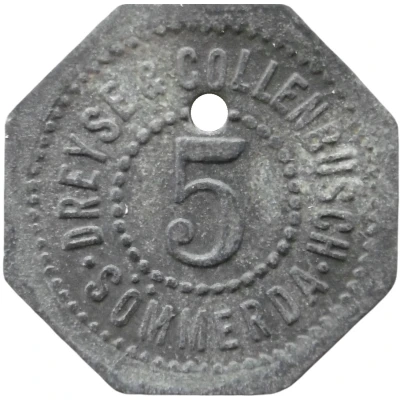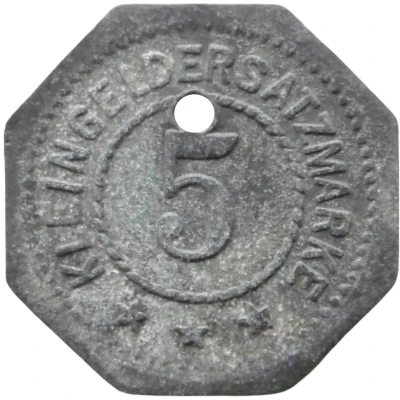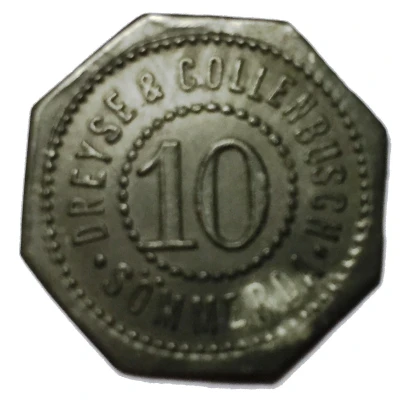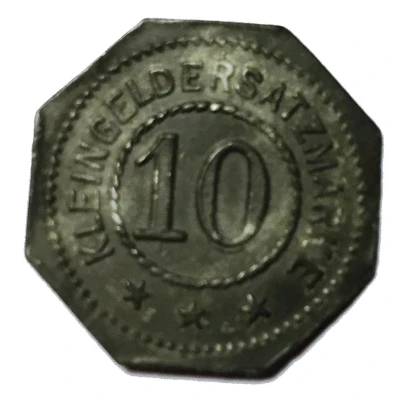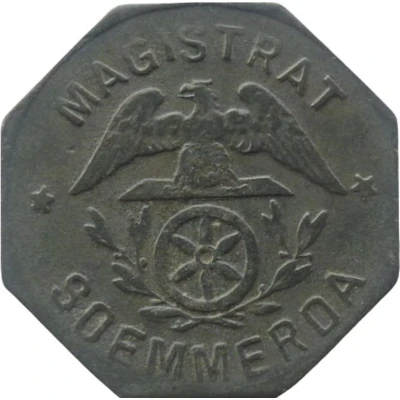
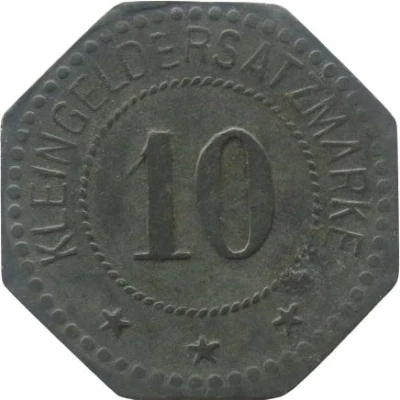

© Willem63 (CC BY-NC-SA)
10 Pfennigs - Sömmerda ND
| Zinc | 1.8 g | 20.6 mm |
| Issuer | City of Sömmerda (Prussian province of Saxony) |
|---|---|
| Type | Standard circulation coin |
| Value | 10 Pfennigs (10 Pfennige) (0.10) |
| Currency | Mark (1914-1924) |
| Composition | Zinc |
| Weight | 1.8 g |
| Diameter | 20.6 mm |
| Thickness | 0.9 mm |
| Shape | Octagonal (8-sided) |
| Technique | Milled |
| Orientation | Medal alignment ↑↑ |
| Demonetized | Yes |
| Updated | 2024-10-04 |
| Numista | N#53052 |
|---|---|
| Rarity index | 78% |
Reverse
Pearl rim, legend surrounding rope circle with denomination centered
Script: Latin
Lettering:
KLEINGELDERSATZMARKE
10
★ ★ ★
Edge
Plain
Comment
Issuing agency: [Stadt, Provinz Sachsen].Interesting fact
The 10 Pfennigs - Sömmerda ND coin was minted during a time of great economic and political change in Germany. The coin was issued in the late 19th century, during the reign of Kaiser Wilhelm II, who ruled Germany from 1888 to 1918. This was a period of rapid industrialization and urbanization in Germany, and the coin reflects the growing economic and political power of the country during this time. The coin itself is made of zinc, which was a relatively new material for coinage at the time. Zinc was chosen for its durability and resistance to corrosion, and it was used to mint a number of coins during this period. The 10 Pfennigs - Sömmerda ND coin is one of the earliest examples of a zinc coin, and it represents an important innovation in coinage technology. Overall, the 10 Pfennigs - Sömmerda ND coin is a fascinating piece of history that provides a glimpse into the economic and political changes that were taking place in Germany during the late 19th century.
